Summary
- KC-135R’s primary mission is to refuel aircraft, with a secondary freight hauling role and passenger capacity.
- The aircraft has been upgraded and continues to serve in various roles, including refueling Navy aircraft with hose and basket systems.
- The KC-135 demo team introduces the public to the aircraft’s mission, with unique photo opportunities and low-level training flights.
Recently, Simple Flying was allowed the extreme honor to fly along with one of Fairchild Air Force Base’s Boeing KC-135R with the serial 62-3502. That means the KC-135 was ordered by the US Air Force in 1962 and according to Planespotters.net delivered in October 1962, the very same month of the Cuban Missile Crisis – a key point in the Cold War. Yet today’s KC-135 is upgraded and able to continue refueling aircraft.
A primer on the KC-135 Stratotanker mission
Before a report on the flight, one should remember that the Boeing KC-135 Stratotanker’s mission is not to serve as a flying living history museum. Rather, the KC-135’s primary job is to be a flying gas station with a secondary freight hauling role of up to 83,000 pounds (37,648 kilograms) and according to a US Air Force fact sheet 37 passengers. That is less than what a 707, which the KC-135 is based on, can carry but the KC-135 is configured for hauling cargo first while having seats along the fuselage and slots to secure seats along the floor.. There are several hundred KC-135s stil flying.
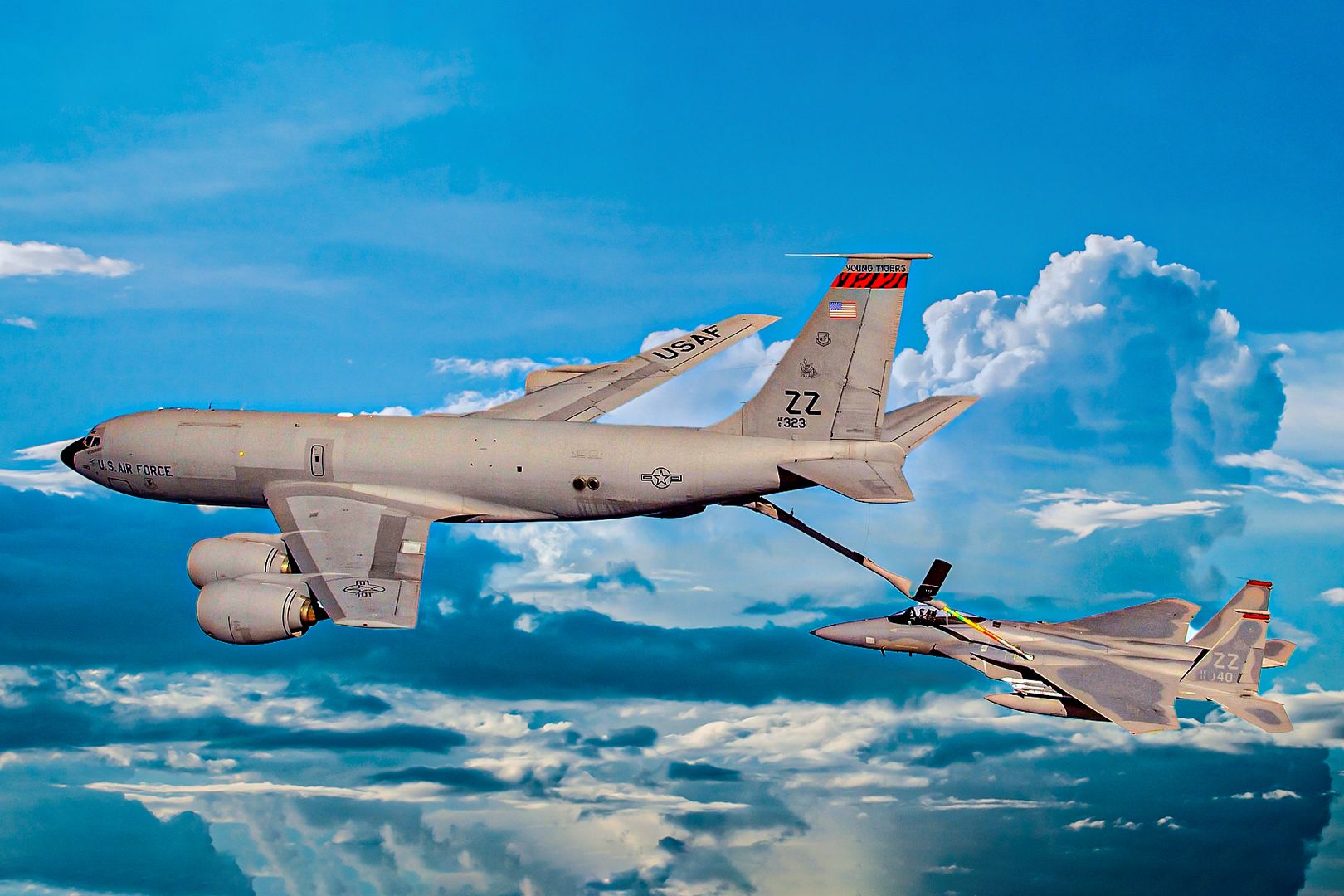
Related
How Many USAF KC-135 Stratotankers Are Still Flying?
Even though it is due to be retired, the KC-46 will remain in service with the USAF for a decade or more.
The KC-135 can carry 200,000 pounds (90,719 kilograms) of jet fuel to offload to needy aircraft, whether they be a F-15C or F-15EX Eagle on a combat air patrol mission, a F-35A about to self-protect while penetrating enemy airspace, an E-3 Sentry ready to provide airborne warning and control systems, or even another tanker. Additionally, there are some KC-135s modified with hose and basket systems to refuel Navy aircraft.
Photo: Joe Kunzler | Simple Flying
Finally, there is now a KC-135 demo team to introduce the public to the KC-135’s mission. This includes a pass where an aircraft like a C-17 or F-35 moves to pre-contact position and then holds off to give crowds decent visuals.
The flight itself
The terminal to board the KC-135 was arguably typical US military: Mostly windowless, with a big digital clock for multiple time zones. We did have to go through a security screening like at commercial airports, and then were allowed to wait in a waiting area with no windows towards the airport. At least there were charging ports to charge my spare camera batteries with and good company.
When Major Lindsay “Mad” Johnson did her A-10 demo, we were kindly allowed to watch the demo. It was one of many honors from Fairchild AFB public affairs to let us watch from arguably a unique angle several thousand feet from show center, getting “Mad” doing some turns and the Memphis Belle III in-flight photos in the below story are from that photo opportunity:
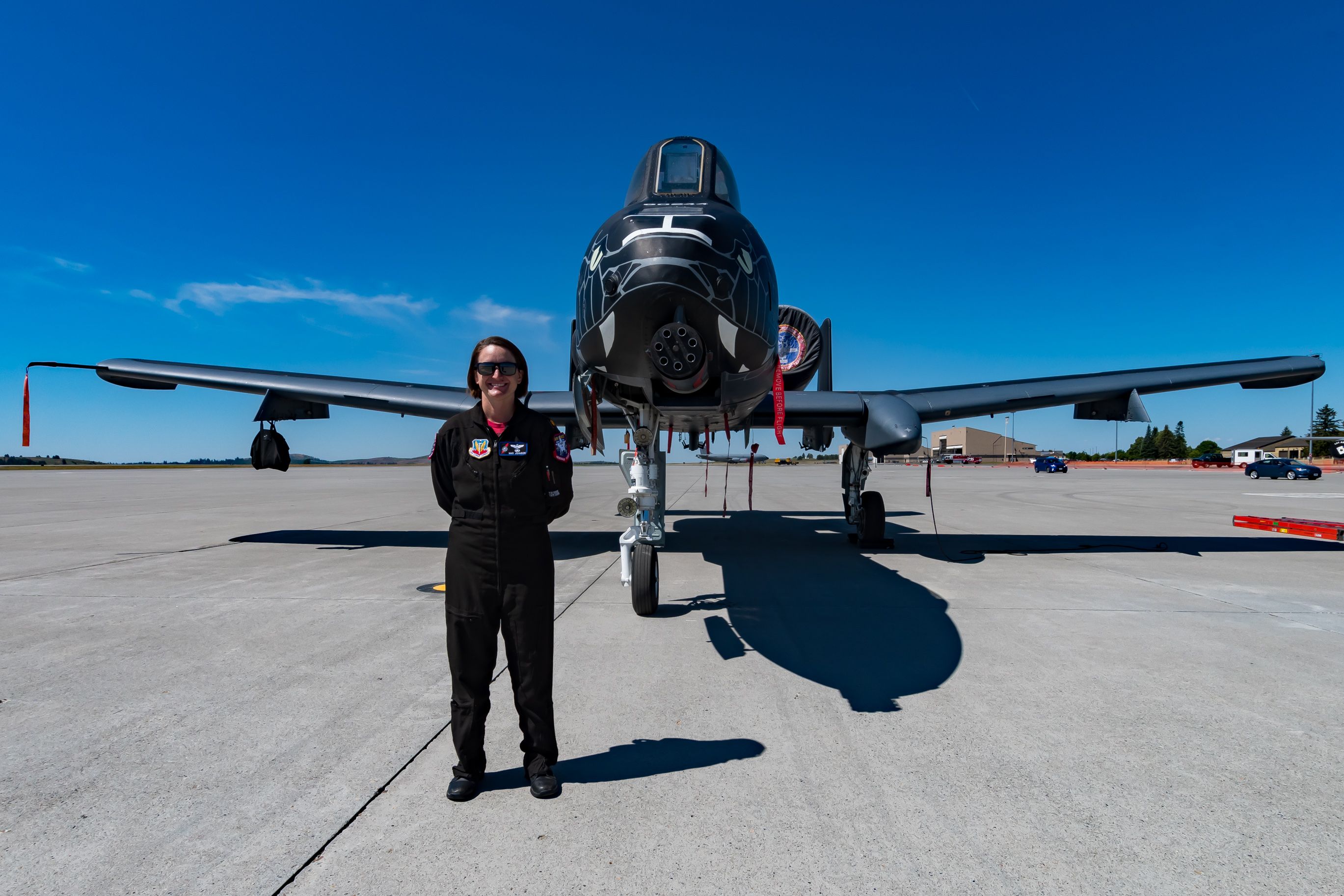
Related
Skyfest: One On One With Major “Mad” Johnson Of USAF A-10 Demo Team
An interview with A-10 Demo Team pilot Maj. Lindsay “Mad” Johnson discussing the A-10C Demo Team’s place in history and more.
But eventually, boarding time would come. We thankfully did not have to turn on our smartphones to produce a boarding pass as is the case now in commercial aviation. Instead we got to ride in a crew cab truck across the flight line, hearts pounding in joy and excitement. We boarded via (a stair truck) and had an important safety briefing in the event of any unplanned eventualities. Then we chose our seats and got settled in. I got into the jump seat and buckled in. We then had a flight that was quite educational inside the same KC-135 who would demo and go to pre-contact formation with the C-17 Demo Team profiled last year – or formation just before having the probe make contact with the refueling probe:
Photo: Joe Kunzler | Simple Flying
The take-off was quite fun actually. We used most of the runway, but it was a thrill nonetheless to climb into the sky. We did start to get hit by turbulence on take-off and that light thermal turbulence would be a constant throughout the flight. There was also some “mountain waves” of turbulence. One can read a guide below:

Related
Turbulence: 5 Things You Should Know
Turbulence is part of flying and is normally responsible for little more than spilling passengers’ drinks.
Even though the KC-135 can soar up to 50,000 feet (15,240 meters), the KC-135 on this flight rarely went above 10,000 feet above sea level except on an initial Instrument Flight Rules (IFR) clearance. Part of this is that visual flight rules (VFR) is not generally allowed over 10,000 feet above sea level, and the primary mission was just a low level training flight over northeastern Washington State and northern Idaho.
Photo: Joe Kunzler | Simple Flying
The photo opportunities though, especially flying above and behind Grand Coulee Dam and banking while raging around quite low as if avoiding radar was an incredible honor to document and fly along with. As our copilot said I was, “high on life”.
Photo: Joe Kunzler | Simple Flying
But at some point, I had to head back to the refueler’s station. Below is a general view from the US Air Force:
Photo: Senior Airman Yosselin Campos | 18th Wing | US Air Force
Having to lay down and try to get photos in turbulence seemed a bit nerve wracking versus any potential reward since we were not aerial refueling. Especially on a dehydrated stomach and knowing one fellow media passenger was ill. I did not want to become the second so I headed back to the cockpit for arguably the best views. Also, next time I fly a KC-135 I will definitely be hydrated and practice taking photos while laying down.
But I did speak with a KC-135 boom operator about using the KC-135 boom versus the remote set-up of the KC-46 Pegasus. The boom operator wanted to stay with the KC-135’s set up. One can read more below on the KC-46 configuration:
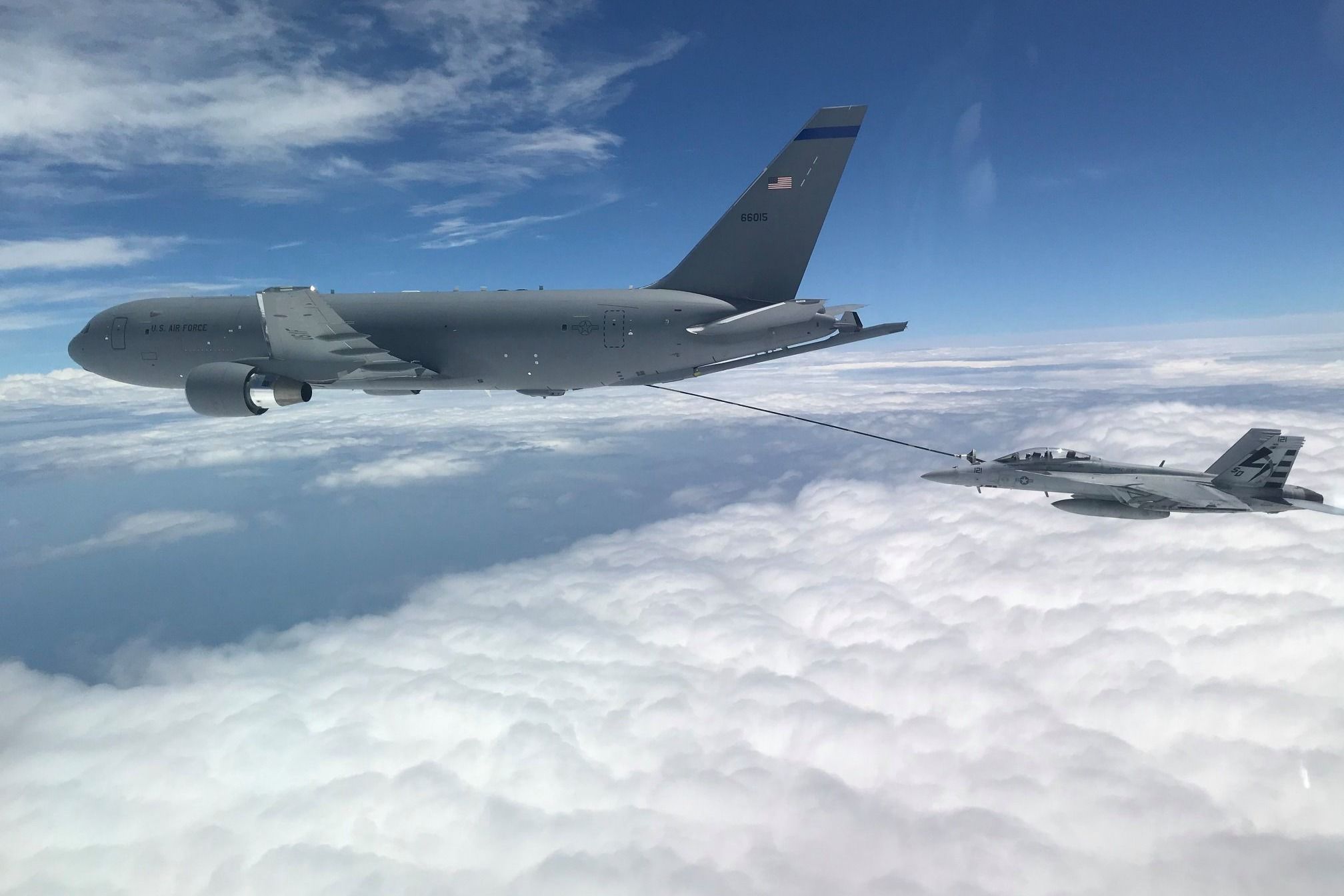
Related
How The USAF Overcame Issues With The Boeing KC-46 Pegasus
A main problem with the KC-46 was the refueling boom vision system.
With that, on landing, I was sitting in the flight engineer seat so that another photographer-videographer could video the landing from the jump seat. We enjoyed a long, smooth approach into Fairchild Air Force Base in arguably the most peaceful part of the flight.
In closing
The next day, the same aircraft would be the KC-135 in the role demo, and a photo from its low pass is the cover photo. I was highly honored to once again for the first time since 2016 fly in an airshow performer’s aircraft and experience some living history again. Having multiple disabilities, the opportunities to make instead of document aviation history is very limited. But one can rest assured that the Washington Air Guard is up to the task of keeping history alive as long as the need exists.
What are your thoughts? Please share in the comments.

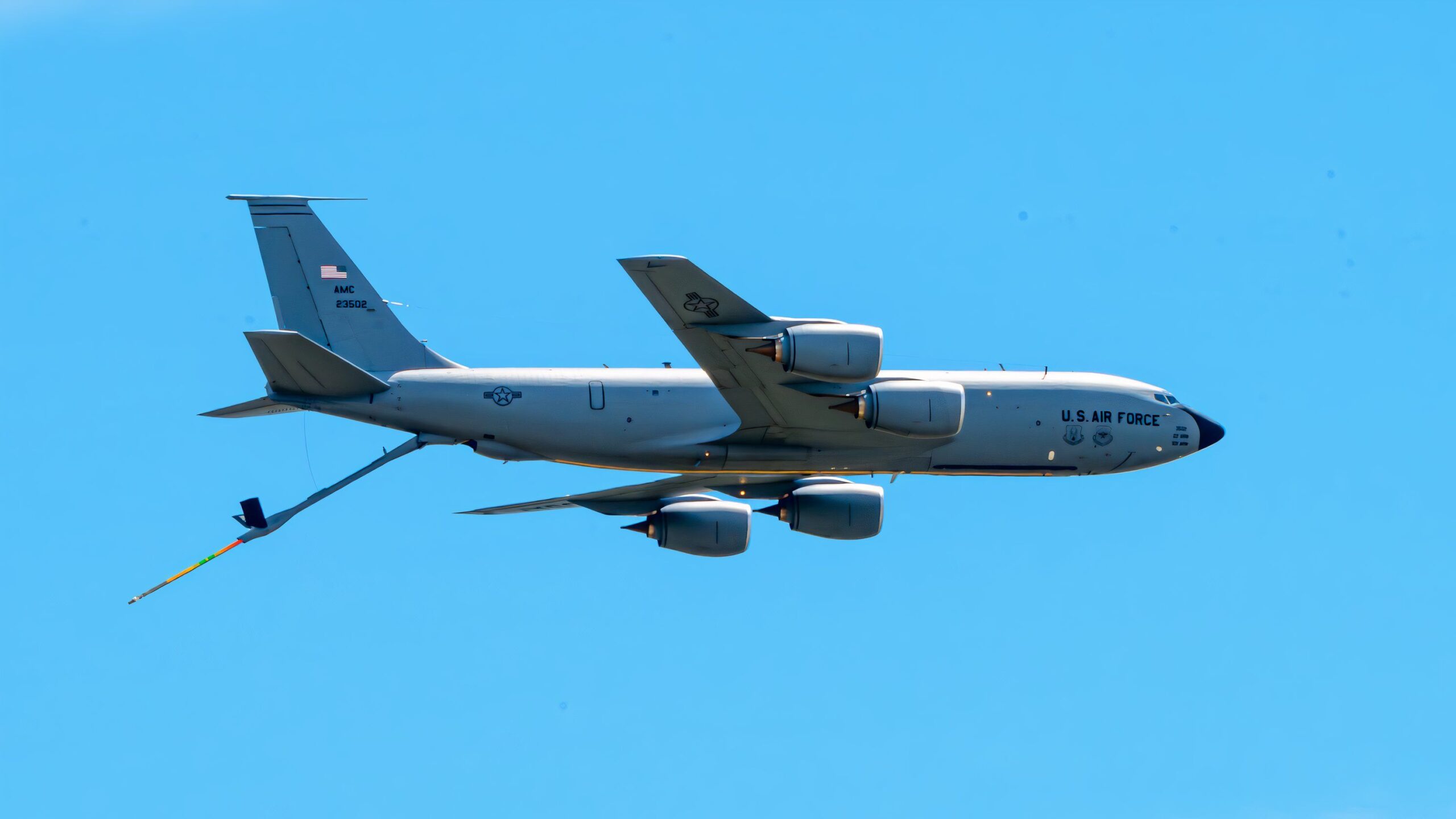
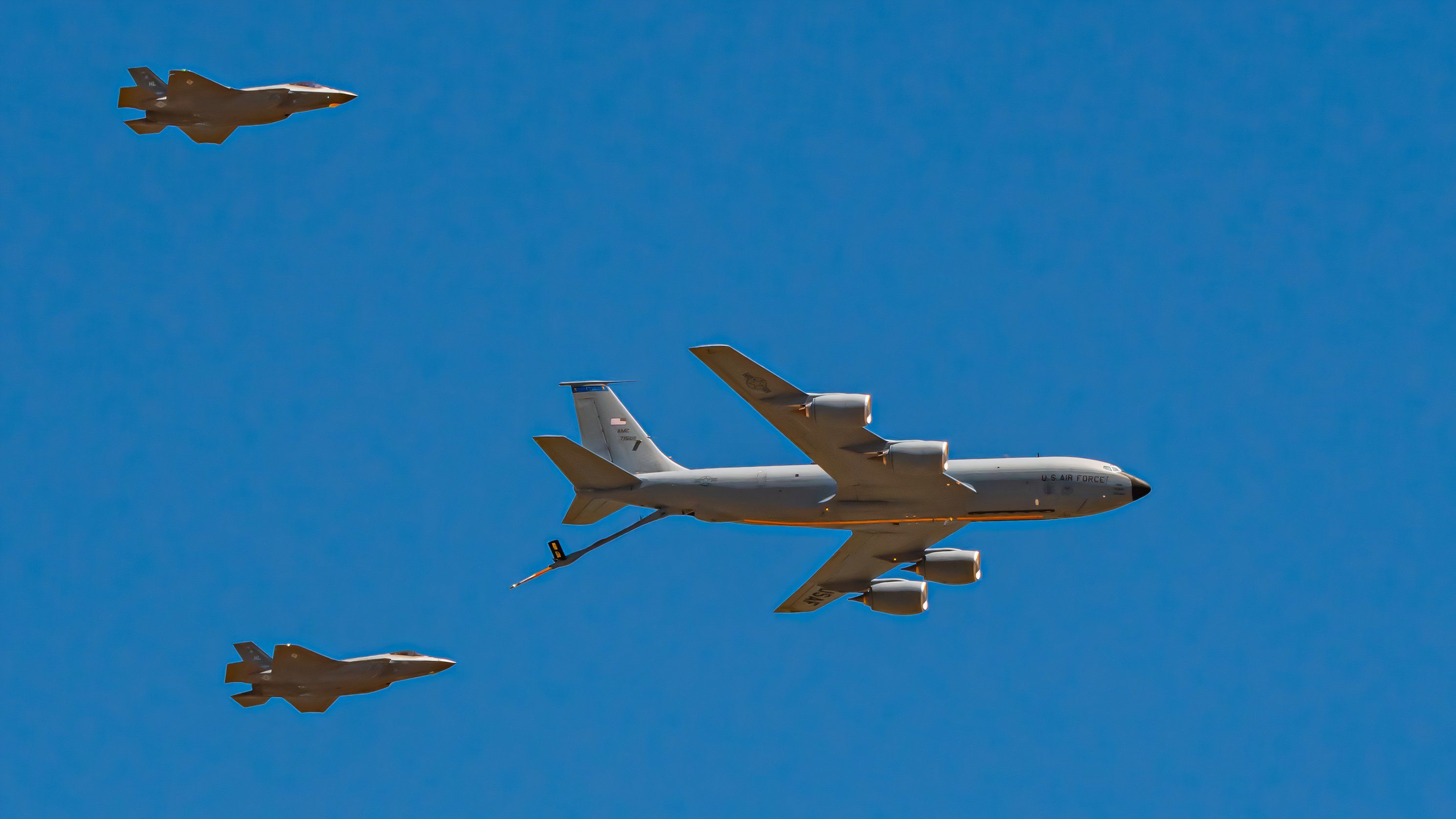
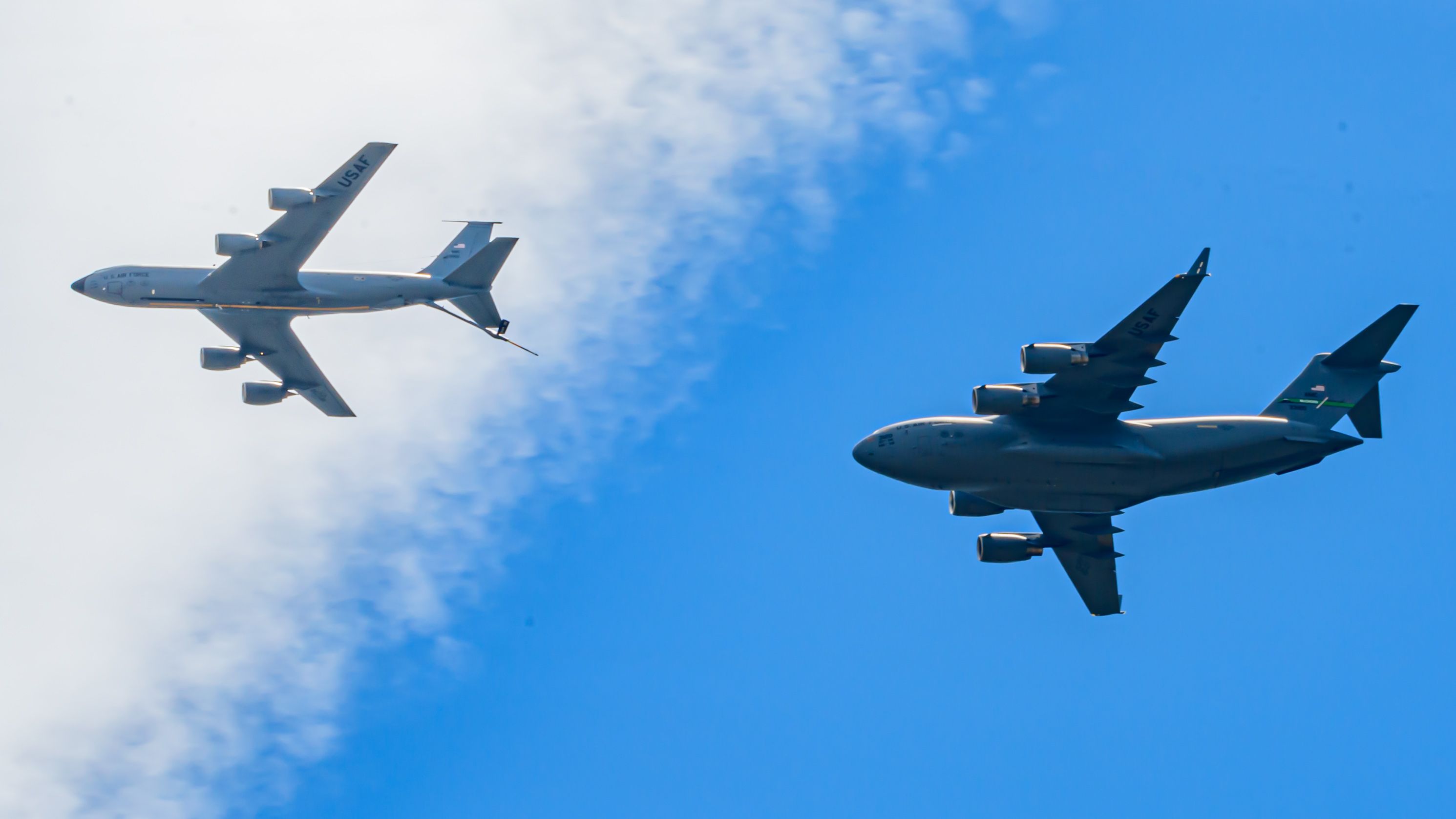
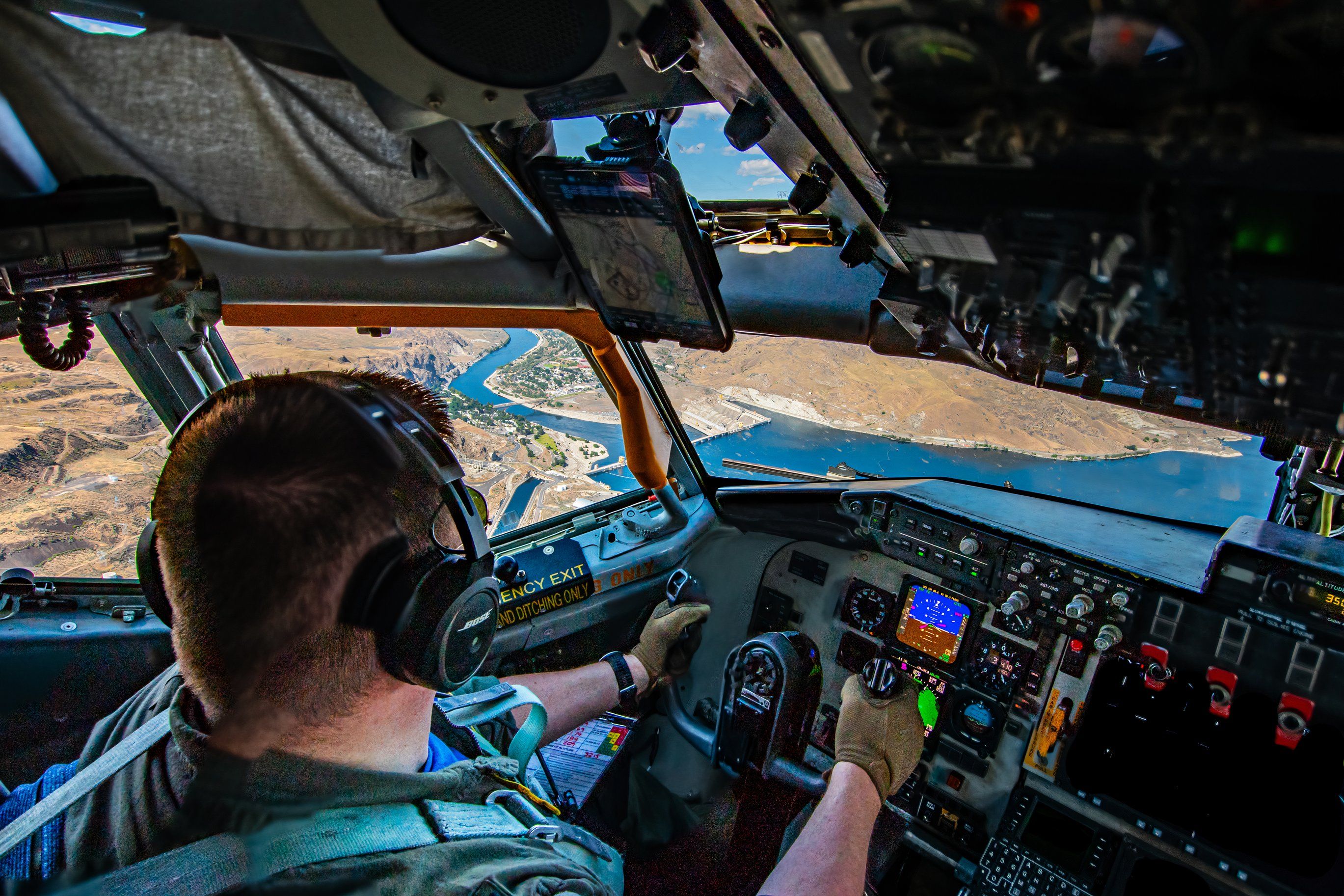
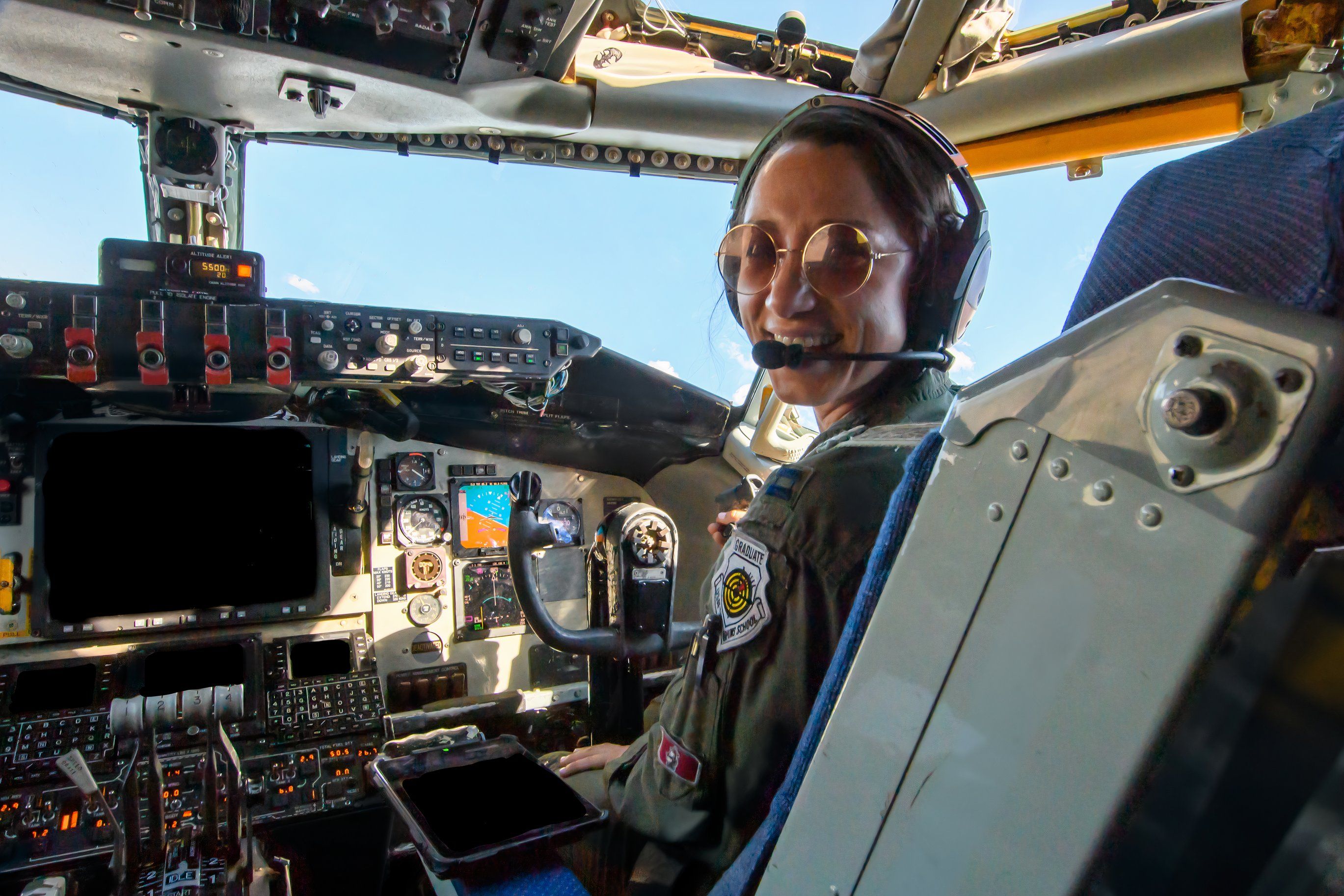
![8353357 - 909th ARS keep Hogs flying [Image 8 of 8]](https://static1.simpleflyingimages.com/wordpress/wp-content/uploads/2024/06/8353357.jpg)